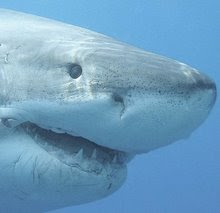A Bigger Black Hole - Scientists have long believed that most, if not all, galaxies, including our very own 'Milky Way' home, have a black hole at their centers. After all, those billions and billions of stars have to be swirling around something, right? What better than a single, nearly infinite point of mass at which matter becomes infinite and time stops in its tracks? Like a Giant Pac-Man or your local DMV. Problem is, measurements of the probable size of the black hearts of 'local' galaxies were much smaller than those suspected in distant Quasars. Luckily for the theorists, a new model of the black hole at the center of galaxy M87 - a neighboring spiral only 50 million light-years distant, so 'local', indicates it to be more massive than previously thought, at something like 6.4 billion solar masses. That new mass brings it more into line with those Quasarian holes whose measurements (and a bit of swagging) indicate 10 billion solar masses. Whew! The article relating this discovery didn't mention what kind of 'model' was used, but certainly it must be some high-tech complex thing that can only run on the latest supercomputer and not something you download to your iPhone.
A Star May Be Born - Meanwhile, other scientists have found a nearby 'massive, tranquil' cloud that may be a stellar nursery. At only 23,000 light years distant, it really IS 'local', and at 120 times the heft of our sun, it really is massive. If this interstellar cloud is going to produce a star, its life will be brief and hot, and will end explosively in a supernova. Like having a cute neighbor baby who grows up to be Jeffrey Dahmer, this new star might become unwelcome sometime in our future, say another 23,000 years or so. My mortgage should be paid off by then ...
Aim towards the star on the right, and go straight on until morning ... (Uh, Captain, have you been adding whiskey to your Earl Grey?)





No comments:
Post a Comment